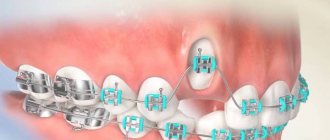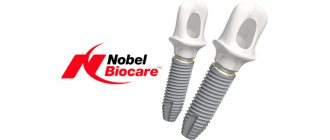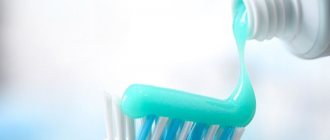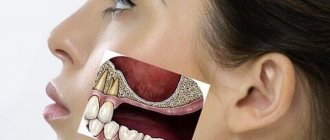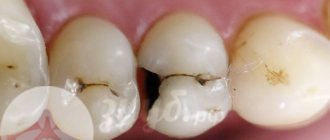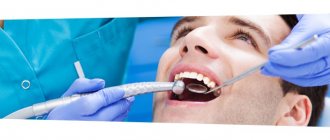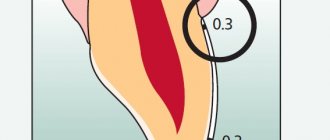- home
- Articles
- Piercing
The word piercing comes from the English piercing, which means “to make holes.”
Nowadays, piercing refers to the piercing of various parts of the body (from the ears to the genitals). Immediately after piercing, an earring or other jewelry is inserted into the resulting hole.
The history of piercing goes back to the history of ancient Africa and is associated with the Maasai tribe. A mandatory attribute of a member of this tribe were holes in the ears, quite large in size. Later, women of the Bedouin tribes began wearing earrings both in their ears and noses, and in Ancient Rome legionnaires had rings inserted into their nipples. It was believed that their character was strengthened in this way.
Today, piercing has more of a cosmetic purpose and, just like tattoos, serves as a way of self-expression. Everyone has their own goals for piercing. As a rule, this is a way to stand out from the crowd. But it also happens that piercing appears by chance, for example, as a result of an argument or a desire to enter a certain subculture, where tattoos are impossible.
A person of almost any age can get a piercing. Of course, a baby’s ears should not be pierced, but three to four years is enough.
Since the skin needs time to form after a puncture, it is not recommended to remove or change the jewelry yourself for 5 months (and in cases of piercing the navel or cartilage - up to a year). It is worth considering that in cases of a navel piercing, if the earring is removed for only 2 hours, the hole will close and it will no longer be possible to insert the jewelry into place on your own.
Where to get a piercing? Is it possible to do a piercing at home?
In order to get professional and high-quality piercings, there are tattoo studios and piercing studios. They have all the necessary conditions for high-quality provision of services, and the craftsmen have the necessary experience and qualifications. Is it possible to do a piercing at home? Theoretically, yes, it is possible, but each puncture has its own nuances - the correct angle of the puncture, location, selection of the length of the jewelry, which are very difficult to observe on your own. Moreover, piercing yourself for the first time can be quite scary; in the end, instead of a beautiful and even puncture, you only injure yourself. We advise you not to carry out such experiments, but to contact a piercer . There is also an opinion that such procedures should be performed by a doctor, but, despite medical education, such specialists do not have the appropriate knowledge about piercing, the necessary tools or disposable supplies, as well as suitable jewelry, so medical institutions or beauty salons are not the right place for piercing.
Possible complications
If complications occur, you should immediately consult a dermatologist. Like any surgical intervention, the harm of piercing can be significant if you use the services of a non-professional. The risk of damage to the facial nerve is especially high. And if sanitary conditions are not observed, the puncture can become infected with viral hepatitis and even HIV. Therefore, it is necessary to take special care when choosing an experienced specialist. All tools and jewelry for piercing must be professional and comply with European GOST standards.
Is there a risk of contracting hepatitis or HIV?
Do not get piercings in questionable places, at home, in a club, etc. The master must work in disposable, clean gloves, and the instruments must be sterile. If you are worried, the technician can remove tools from an autoclave or ultraviolet cabinet in front of you . If all hygiene standards are followed during the procedure, everything will be fine.
Does it hurt to get a piercing?
The pain of the puncture depends on the client’s pain threshold ; for some people, one puncture does not hurt at all, for others it is very unpleasant. But there are punctures that are more painful than others. The most painful piercings are nipple piercings, tragus and medusa . But you shouldn’t be afraid of these punctures; the piercing procedure only takes a couple of seconds. Where doesn't it hurt to get a piercing? The most painless places are conch and helix , but there are still people who find injecting them quite unpleasant. To make the procedure as comfortable and painless for you as possible, we advise you to get a good night's sleep, eat a hearty meal, and before the puncture itself, you can drink tea with something sweet.
What should you think about before getting a piercing?
If you decide to pierce the cartilage in the auricle, you should think about which side you sleep on - you cannot sleep on a fresh puncture for the first 2-3 weeks to avoid injury, so choose the puncture site on the side on which you sleep less. In the case of a tongue piercing, we advise you to choose a day of the session after which you will have a weekend , because the tongue swells greatly after the piercing, and in order for the swelling to subside faster, it is better to refrain from unnecessary conversations as much as possible. It is also undesirable to get a piercing before going on vacation to hot countries ; with a fresh piercing, swimming in open water is prohibited for 3-4 weeks.
Health Hazard
In addition to aesthetic beauty and self-affirmation, the use of piercings on different parts of the body can have a negative impact and harm on a person’s health. Failure to comply with hygiene standards can lead to the development of an inflammatory process, which, in the absence of proper medical treatment, can lead to the death of adjacent tissues and the development of an abscess.
When performing a lip piercing, the consequences can be very different. It involves constant contact of the open wound and jewelry with food and teeth. It is necessary to pay more careful attention to oral hygiene after each meal, otherwise inflammation may develop. Contact of jewelry with tooth enamel leads to its thinning and tooth defects.
The area of the nasolabial triangle has a large accumulation of blood vessels and nerve endings. In addition, people very often rub this area with their hands.
In this regard, bleeding, inflammation of the facial nerve, the appearance of an allergic or bacterial rash may occur, and there is also a high probability of stomatitis.
Tongue piercing takes a leading place in terms of complications. The consequences of tongue piercing can be very dangerous. An unsuccessful puncture can lead to serious blood loss, which can only be eliminated through surgery. After the puncture, severe swelling and discoloration of the organ are observed.
Itching, pain and burning of varying degrees of intensity will accompany you for a long time. If hygiene standards are violated, purulent discharge and putrid odor from the mouth may appear. One of the consequences is stomatitis and fungal infection of the oral mucosa.
When performing piercing in the eyebrow area, there is a very high risk of damage to the optic nerve, which can lead to loss of visual acuity, drooping of the eyelid, limited field of vision and extensive hemorrhage.
In terms of consequences, the most harmless type is ear piercing. Swelling, purulent discharge, itching and peeling may occur. However, in cases of damage to the facial nerve, it is possible to develop facial asymmetry, loss of sensitivity in certain areas of the skin, as well as uncontrolled lacrimation.
How to care for your piercing
Caring for your piercing depends on where the piercing is made. But for all punctures, first of all, quality treatment and rest . The best product for caring for piercings is the antiseptic octenisept (or miramistin, but this is a slightly worse option). It is necessary to treat punctures 2 times a day, and do not use cotton swabs or cotton pads . Piercing care in the first days includes complete rest for a fresh piercing, so all punctures made in the auricle, as well as nipple piercings, must be covered with a soft-lined plaster for 2 weeks to prevent injury. If you cannot find a patch of the right size, a sterile napkin with pieces of the patch will do. For 3-4 weeks, avoid steaming the puncture (baths, saunas, hot showers and hot baths are prohibited). After taking a shower, the puncture must be treated. In case of injury and inflammation, apply baneocin ointment 2 times a day, seal ear piercings again, but use the ointment for no more than 5 days. After 2-3 weeks, if necessary, do a planned downsize (replacing the primary decoration with a shorter one). In the case of a tongue or smile piercing, the rules for caring for the piercing are somewhat different. Lakalut, Asepta or President mouth rinses are suitable for treatment use them 4-5 times a day and after each meal. Eliminate from your diet all spicy, salty and too hot foods, as well as soda.
Hygienic care rules
Regardless of what part of the body or face the piercing is located on, in order for the resulting wound to heal as quickly as possible, certain rules must be followed. Punctures heal at different rates. This largely depends on the speed of regeneration of the client’s tissues.
If an infection occurs during the healing process, the process is delayed. Healing may take several weeks to several months. Compliance with basic rules will speed up this process and avoid negative consequences.
- Use only a trusted professional with good reviews. An unscrupulous specialist can not only make your piercing crooked, but also cause severe pain or even leave wounds on your body.
- Use jewelry only from high-quality materials, such as medical steel. In no case should cheap jewelry be used for piercing, as it tends to oxidize and deteriorate during wear. In such cases, inflammation is guaranteed.
- Compliance with hygiene standards when performing procedures in the salon. Disposable needles and septic treatment.
- Compliance with recommendations for treating the puncture site. Bathing is prohibited for 24 hours after the procedure.
- Avoid contact of external contaminants - dust, dirt, oils - at the puncture site. But at the same time, you cannot cover the puncture with a band-aid. Thus, this place will become a favorable environment for the development of anaerobic bacteria.
- If you experience new pain, redness or swelling of the piercing site, you should consult a doctor. These symptoms indicate a bacterial infection.
- The jewelry can be replaced with a new one only after the wound has completely healed. Before use, jewelry is treated with an antibacterial agent.
- Piercing jewelry, like a toothbrush, is a means of individual consumption. When used together, it is possible not only to introduce a bacterial infection, but also to become infected with more serious diseases such as HIV and AIDS.
As in any type of activity, when using jewelry for the face and body, you need to know when to stop. Those who are big fans of wearing iron on their faces very often come across negative attitudes from people around them. People with such predilections are, as a rule, representatives of certain subcultures.
Read also Water diarrhea in an adult: treatment and causes
Does the piercing take a long time to heal?
The complete formation of the canal for many punctures takes on average 6-8 months (with the exception of tongue and smile, they heal much faster), but this does not mean that the puncture will hurt throughout this time. If you follow all the recommendations and proper care, the pain goes away after 2-4 weeks.
Rules of asepsis and antisepsis
Puncture of any part of the body must be performed in a salon using a special gun or needle. The procedure is performed by a specially trained master. Piercing on different parts of the face and body can be performed with or without anesthetics. To do this, use gels, creams and sprays based on lidocaine.
After treatment with an anesthetic drug, the site of the future puncture is covered with a film and the required time interval is waited for the drug to take effect.
The procedure is performed very quickly and causes a minimum of pain, acceptable for each area. Before piercing, the surface of the skin is treated with an antiseptic or antibacterial solution. Only disposable needles are used. The package with accessories for performing the procedure must be opened in the presence of the client. Compliance with the rules of asepsis and antisepsis is mandatory, as with any type of surgical intervention.
Read also: Nausea and vomiting of blood in adults, causes and treatment
Primary piercing jewelry
It often happens that the client’s request is to immediately place a ring in a fresh puncture. But the primary decoration for piercing is a straight labret or barbell (or a microbanana for piercing the navel, eyebrows, ruuk and day), the only exception is the smile piercing, you can immediately put a ring or circular in it. This is explained by the fact that the labret is much more static; it practically does not move inside the puncture, which reduces the risk of mechanical injury. The carving of jewelry also plays an important role; external threads can injure a puncture and collect a lot of dirt, so it is better to give preference to jewelry with internal threads . The material is also very important; jewelry made of surgical steel, jewelry gold or low-grade silver will not allow punctures to heal properly due to the presence of nickel in its alloy, which oxidizes while in the body. Is titanium suitable for a first piercing? Definitely yes, titanium is one of the most hypoallergenic metals at the moment.
How does the puncture procedure work?
First of all, the master helps in selecting jewelry. The decoration and all necessary instruments are sent for sterilization. The technician treats the puncture area with an antiseptic and makes markings. A through puncture is made with a special hollow needle. If required, the fresh piercing is sealed. The master gives recommendations for care. The piercing procedure takes on average 30 minutes, which includes preparing the workplace, sterilizing instruments, marking, etc., but the puncture itself takes only a couple of seconds.
Cultural significance
The modern world is rapidly changing before our eyes. Today, a tattoo, a pierced tongue or an eyebrow is no longer perceived as a manifestation of a rebellious spirit, as it was before, in the days of our parents, when earrings were only allowed to be worn in the ears, and then only for girls.. Even our society, which is highly conservative, has become It’s normal to treat such decorations. A person who wants to stand out in this way does not experience discomfort in communicating with others, difficulties in getting a job, etc.
Now piercing is considered commonplace, regardless of the gender of its wearer, social status and place of puncture. Therefore, those who want to decorate their body with earrings should not be afraid that this will be negatively perceived by others.
What complications and consequences can there be after piercing?
If you follow all care recommendations, the likelihood of complications after piercing is very low. Most often, problems in healing arise due to mechanical trauma, that is, if you catch or pull the jewelry, then inflammation of a fresh puncture is inevitable. Complications after piercing can also occur if you have a weakened immune system, or if the piercing was done during a cold. You should do piercing with caution if you have dermatitis, psoriasis, seborrhea, lichen and other skin diseases; it is better to consult a doctor before the procedure, otherwise the consequences of an unsuccessful piercing will take a very long time to heal.
What can happen to the puncture site or tattoo?
Skin, designed to protect us from threats from the outside world, remains a very delicate matter. Injuring it during piercing is fraught with the following consequences:
- allergies to metal or tattoo ink components;
- scar formation;
- sepsis (blood poisoning).
The first case is usually detected some time after the procedure. When faced with symptoms of long healing, swelling or suppuration, do not neglect the help of specialists!
Scarring is possible if you do not properly care for the puncture site or if the technician is careless: in an effort to cope with the injury, the connective tissue grows excessively, forming a scar.
It is impossible to miss blood poisoning - it develops rapidly a few hours after the “operation”. A visitor to a beauty salon finds it difficult to breathe, experiences fever, tachycardia, and sees things that are not what they usually see? An emergency call must be made immediately! The rest is up to the doctors.
The risk of infection is always relevant, even if the piercing or tattoo was done in the most expensive salon in the city. And not only because of the dishonesty of its employees: walking around with damaged skin, you can catch an infection - HIV or hepatitis is unlikely, but tetanus and tuberculosis - easily!
Important! Is the newly opened salon inviting visitors with mega discounts? Don’t rush to become its first clients: the establishment can disappear as quickly as it opens. But the infection will not go away on its own.
Are there any contraindications for piercing?
There are several main contraindications for piercing: Age. How long can you start getting a piercing? By law, piercings can be done from the age of 16 in the presence of a parent or legal guardian. Pregnancy. In the early and late stages, stress during the piercing procedure can affect the course of pregnancy (during lactation you should also refrain from piercing). Heart disease. Before the procedure, you should definitely consult your doctor. Contraindications to piercing can also include chronic skin diseases, kidney failure, cancer, in which case a consultation with a doctor is required.
FAQ
- Are there any contraindications to piercing?
Yes, I have. A puncture cannot be done if you have a number of diseases: diabetes, AIDS and HIV infection, viral hepatitis, herpes, mental disorders, epilepsy, oncology. Also, the procedure is not performed during pregnancy or lactation.
- Which area is the most painful to pierce?
It all depends on the individual pain sensitivity threshold. It is believed that the most severe pain is caused by piercing the nipples, ear and nose cartilage. The least painful puncture is in the earlobe.
- What jewelry material does not cause allergies and complications?
For the initial puncture, jewelry made of safe hypoallergenic titanium, medical steel, polytetrafluoroethylamine (PTE/PTFE), bioflex, and acrylic are recommended.
Share link:
What piercing is in fashion now?
Previously, piercing was considered an attribute of informals, but with the development of the piercing and body modification industry, this opinion has completely changed. Is piercing fashionable? Of course yes! Manufacturers of piercing jewelry create forms of products that look sophisticated, and everyone can find something that will perfectly highlight their individuality. The most fashionable piercing at the moment is the piercing of the wing of the nose and microdermal. These piercings have not lost their popularity for a long time, and are suitable for absolutely everyone. But the fashionable piercing of 2021 is, perhaps, the helix and conch piercing, which look harmonious in any look.
